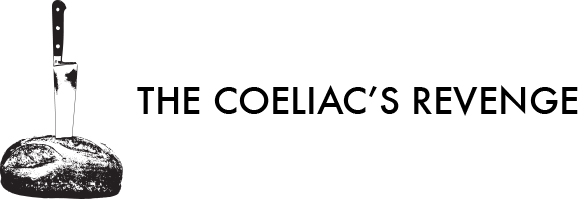MEZZE
Rosie and I had a fantastic time in Jordan in early 2019, taking in the incredible landscape, the antiquities and eating some really delicious food. In fact we ate a lot of really delicious food. We were happy recipients of the renowned Middle Eastern hospitality, encountering laden tables of mezze, salads, grilled meats, elaborate rice dishes and simple desserts.
Nearly every meal included olives, plus some form of yoghurt and an array of pickles. In Amman we had Grilled Olives, smoky from the grill. Yoghurt was often served as lovely Labneh and here I’ve rolled some in Hazelnut Dukkah, although za’atar is the spice blend traditionally used in Jordan.
Some of the pickles we ate were bright purple-pink, having been coloured by slices of beetroot slipped into the pickling mix. I used a purple cauliflower and red wine vinegar to achieve the pretty colour of the Pickled Cauliflower below. The Pickled Baby Cucumbers and the Pickled Chillies are not tinted but they taste good nonetheless.
These simple recipes can be prepared well ahead of time and make a great mezze selection. Add some creamy hummus*, universally popular in The Middle East, a salad or two and you have the beginnings of a feast.
Caren
*A multitude of recipes for hummus are available on-line and in cook books so I don’t think the world needs another one from me!
Caren
GRILLED OLIVES
Use any olives of your choice but not Kalamatas or dried olives.
Drain and pat them dry.
Heat a ribbed grill plate to medium-high and place olives on the plate. Lay a piece of baking paper over the olives. Place a heavy frying pan on top of the paper.
Grill the olives for 2-3 minutes. Check that there are scorch marks on the olives and then turn them. Replace the paper and pan and grill for another minute.
Remove the olives to a dish and allow to cool just a little. Serve warm.
LABNEH IN HAZELNUT DUKKAH
1 kilo Greek yoghurt
1 teaspoon sea salt
Olive oil
Stir salt into the yoghurt.
Line a bowl with a damp square of calico or a double layer of new kitchen cloth. Spoon the yoghurt mix onto the cloth. Draw the 4 corners into a knot around the handle of a wooden spoon, making a tight bundle of the yoghurt. Hang the bundle over a deep bowl or wide jug so that the whey can drip away.
Alternatively, place the cloth bundle in a colander that fits snugly over a bowl, making sure there is room beneath for the whey to drain.
Refrigerate for 24 hours, squeezing the bundle 3-4 times during that time.
Discard the whey or use it for another purpose such as tenderising a piece of lamb to be roasted.
Using oil-coated hands, form walnut-sized balls of the labneh and place on a plate covered in hazelnut dukkah.
Roll the balls around, gently pressing into the dukkah.
Sterilise 2-3 glass jars. Carefully place the balls into the jars and fill with olive oil to cover. Keep refrigerated. Use within 2 weeks.
HAZELNUT DUKKAH
2 tablespoons white sesame seeds
2 tablespoons black sesame seeds
2 tablespoons coriander seeds
1 tablespoon cumin seeds
30 gm roasted hazelnuts
½ teaspoon sea salt
½ teaspoon black pepper, freshly ground
Combine the sesame seeds in a small frying pan and toast over medium heat until the white seeds begin to colour. Set aside.
Combine the coriander and cumin seeds and toast in the pan until fragrant. Set aside with the sesame seeds.
Grind the roasted hazelnuts in a spice grinder for 5 seconds, toss and process for another 5 seconds. Be careful not to over process or the nuts will turn to a paste. Add all the other ingredients and process in bursts until the nuts and seeds are well combined but the mix is not too fine. (Or alternatively crush hazelnuts and seeds in a mortar.) Store in a dry jar.
PICKLED CAULIFLOWER
1 small purple or white cauliflower, cut into small florets
½ garlic clove, sliced
Water for boiling and rinsing
½ tablespoon sugar
2 tablespoons sea salt
100 ml red wine vinegar
50 ml white wine vinegar
3 cups water
2 tablespoons olive oil
Blanch cauliflower florets and sliced garlic for 20 seconds in a saucepan of boiling water. Drain and rinse with cold water.
Pat dry the cauliflower and garlic and place in a 1.5 – 2 litre capacity sterilised jar.
In a large jug, dissolve the sugar and salt in the vinegars and the 3 cups of water.
Pour the pickling liquid into the jar over the cauliflower.
Gently pour the olive oil onto the pickling liquid. Seal the jar and refrigerate. The pickled cauliflower will be ready in 2 days and will last 1 month.
Note: if you use a white cauliflower and you would like the pickles to have a pinker tinge (the red wine vinegar adds a slight tinge anyway) then add a few slices of peeled, raw beetroot to the jar. Alternatively, if you’d prefer a plain white pickle then use a white cauliflower and 150ml white wine vinegar.
PICKLED BABY CUCUMBERS and PICKLED CHILLIES
300 gm baby cucumbers, washed, cut in half lengthways
200 gm long chillies, washed, left whole, pierced with a sharp knife
½ garlic clove, sliced
½ tablespoon sugar
2 tablespoons sea salt
150 ml white wine vinegar
3 cups water
4 tablespoons olive oil
Sterilise 2 glass jars. Place the cucumbers in one jar, the chillies in the other. Divide the garlic slices between the jars.
In a large jug, dissolve sugar and salt in the vinegar and the 3 cups of water.
Pour the pickling liquid into the jars over the vegetables.
Gently pour 2 tablespoons of the olive oil onto the pickling liquid in each jar. Seal the jars and refrigerate. The pickled vegetables will be ready in 2 days and will last 1 month.







